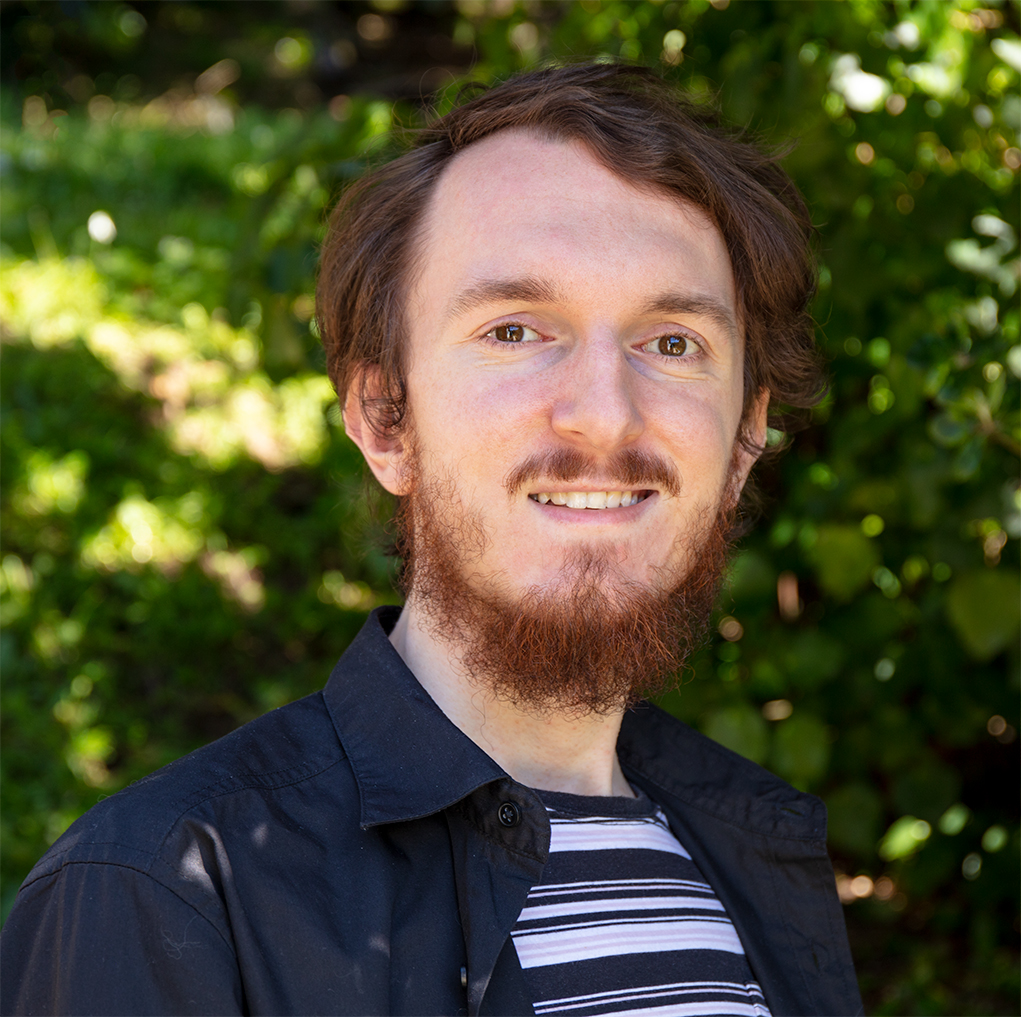In this series ‘Ones to watch,’ we catch up with an up and coming composers to talk about their latest work, what drives them and to find a bit more about them. Nina Lesperance from SOUNZ caught up with Nathan Carter to learn about his mahi.
Tell us about yourself and the music you write. (Instruments you play, special interests, how long you’ve been studying, what you hope to achieve with your work, influences, musical pet peeves, etc.)
I’m Nathan Carter, a multi-instrumentalist and emerging composer/sonic artist/producer from Wellington, New Zealand. Having just completed my third year of a Sonic Arts & Music Technology Composition degree at the NZSM, my musical background combines a wide range of influences and interests. I've played the drums since the age of 5, and as such, groove-based music has always been at the forefront of my creative practice. I've performed in various rock, jazz, and fusion bands throughout my life, and I'm an avid listener of all kinds of groove genres - from Bebop, Jazz Funk, and Rock, to Dubstep, Techno, and IDM. Meanwhile, my lifelong self-taught journey with piano, as well as picking up guitar, bass, and singing in my teens, has developed my love for harmony and a wide array of non-groove-based forms - especially the rich harmonies and textures of choral, orchestral, and ambient music.
These instrumental and listening influences have come together in my composition practice, producing electronic and orchestral music since my mid-teens. My current solo project, ‘Alter Natural,’ focuses on a crossover of atmospheric ambience and harmony with EDM-groove foundations, aiming to express awe-inspiring beauty - ‘sublimity’ - in each work, or simply to explore groove and sound in fun and interesting ways. To meet this artistic focus, these pieces often portray unique sound world through complex/layered ambiences, specific percussion-groove timbres, and/or various DSP manipulations.
This want to express ‘sublimity’ and sound worlds is a common thread throughout the work I’ve done in my music degree, and it's something I continue to strive for in my new works.
Tell us about your work in this year’s NZSM Composers’ Competition
As a thematic follow up from my winning submission ‘The World of Data’ at the 2020 NZSM Composers' Competition, ‘Moving Machines’ took my stereo sound-design explorations of the technological world and extended them into an augmented and naturalistic surround-soundscape (8 channel surround). The work features a series of slowly transforming and spatially active passages focusing on the sounds and raw kinetic energy produced by various modern modes of transport - cars, trains/carriages, and airplanes. Through processing the raw recordings of these sources, each passage generates new harmonic and textural layers, turning each sound passage into a unique musical space. It almost suggests a motivic structure, but the work is still grounded in naturalistic ambience and seamless transformations. Much like the rest of my music, ‘Moving Machines’ is also an exploration of sublimity; the surreal augmentations and harmonic/textural layers bring out tonality and timbral consonance in otherwise chaotic vehicle sounds, suggesting a kind of beauty in their remarkable speed, momentum, bullet-like directionality and/or striking sonic presence in everyday life.
How do you go about creating a new piece? Could you describe your process? Does it change with each new work?
My process slightly depends on the type of music I am creating, but in most cases I create my music sequentially, from start to finish. With soundscape works - like ‘Moving Machines’ - I start with recording various sounds and ambiences, as well as post-recording DSP to generate even more audio materials. Then, through a combined process of mental ’sketching’ of ideas with trial-and-error arranging and spontaneous creative mixing of my audio materials in a DAW, I slowly structure out the sonic/musical passages, sometimes getting new inspiration spontaneously from experimentation. The mental ’sketching’ is also often a visualisation process for me; I find it can be much easier to develop new ideas if I can give visual causalities to the otherwise abstract sounds. In a literal sense, it’s a questioning process: what does this sound look like? What kind of object could such a sound feasibly come from? What sounds could be heard in this scene/landscape?
This visualisation process I’ve also found to be successful in the tracks I’ve been producing as Alter Natural. Being more ‘conventionally’ groove-based though, these tracks don’t generally involve the same kind of pre-production recording and DSP that I carry out in my soundscape works.
What aspects of your piece are you particularly proud of?
I really like how the physicality and energetic movement of the piece turned out. By virtue of the recorded vehicles being spatially interesting themselves, I found it very natural to map them into the surround sound format. I was really able to hone in on the properties of every vehicle motion, accentuating them through spatial rotation, imaging width, and position within the sound space. In fact, the piece was originally designed for playback on a 16-channel 3D sound-system, so this spatial mapping even includes height positioning/transformations. Altogether, the constant spatial activity, combined with the textural, timbral, and harmonic evolutions that happen throughout, creates a really nice sense of worldly immersion and sonic journeying.
What projects do you have coming up?
A few things are on the horizon for me, including several composition collaborations with other NZSM students. I’m also playing drums for an upcoming live-performance/electronic fusion project with recent NZSM graduates Jack Woodbury and Peter Liley - be on the lookout for our names in the months/years to come! Finally, I’m preparing a big release for Alter Natural in December - a culmination of tracks that I have been working on for the past 1 1/2 years. I’ll soon post more details about it through my social media pages, which you can check out below:
